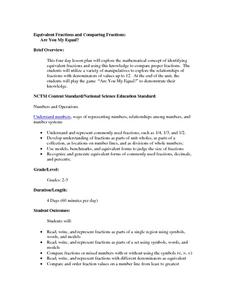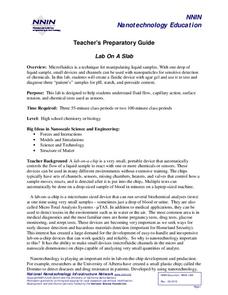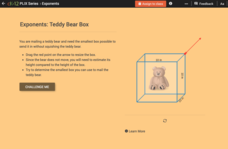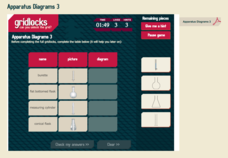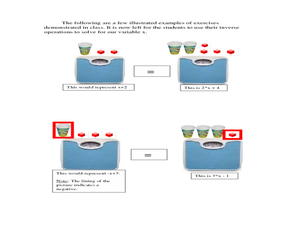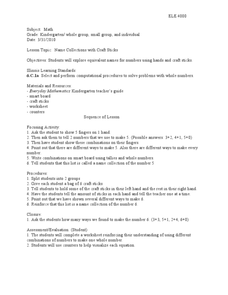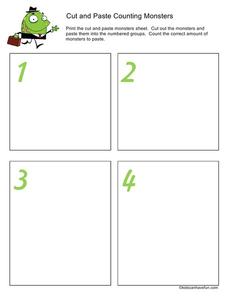TryEngineering
Data Representation: Millions of Colors
How many colors do you know? The lesson teaches scholars how digital devices use binary and hexadecimal representations to store colors. They learn how millions of colors are available on these devices.
Blake Education
Drama Warm Ups
Here's a 15-page packet packed with ideas for warm-up activities that can be used for drama classes or in content courses. Each activity is coded to indicate materials needed, space requirements and appropriate audience. A great...
Curated OER
Equivalent Fractions and Comparing Fractions
How can you tell if fractions have equal value? Use various collaborative activities to demonstrate the ways to determine whether or not fractions are equivalent.
National Nanotechnology Infrastructure Network
Lab On A Slab
Capillary action is the frugal chemist's dream ... the less liquid used, the more tests they can run! Learners experiment with the best design to maximize the benefits of capillary action. Using a liquid sample, they design a capillary...
CK-12 Foundation
Whole Number Exponents: Teddy Bear Box
Five questions—multiple-choice, fill in the blank, and discussion—make up an interactive that challenges scholars to mail a teddy bear using the smallest box possible without squishing it. A box with movable sides allows mathematicians...
Royal Society of Chemistry
Apparatus Diagrams 3
Glassware everywhere! How do you help scholars learn to identify the different types of laboratory glassware? Introduce them to some of the main tools of the trade through interactive puzzles. Users match and manipulate items based on...
West Contra Costa Unified School District
Multiplying Binomials and Factoring Trinomials
Two lessons for the price of one! Learners use algebra tiles to multiply binomials in the first lesson, Next, they use their knowledge from the first lesson to factor trinomials into two binomials.
CK-12 Foundation
Distributive Property: Catching Fireflies
Model the distributive property with jars of fireflies! An interactive animation has learners manipulate the number of jars of fireflies to determine the number caught. Accompanying questions ask scholars to consider the multiplication...
EngageNY
Equivalent Rational Expressions
Rational expressions are just fancy fractions! Pupils apply fractions concepts to rational expressions. They find equivalent expressions by simplifying rational expressions using factoring. They include limits to the domain of the...
Curated OER
On the Trail of the Hudson's Migratory Fish
Using data related to the fish in the Hudson River area, learners calculate distance, elapsed time, and growth. They learn about migratory fish, the life cycle of a fish, analyze a map, and answer questions.
Curated OER
Add Tens and Ones
Six story problems challenge young mathematicians to add single- and double-digit numbers. Manipulatives would come in very handy for primary graders tackling this learning exercise. Some of the sums have addends as large as 25 and 33....
Curated OER
Face The Facts To Remember
Second graders use manipulatives, drawings, and story problems to learn the two's multiplication tables. After learning how to find answers, they participate in a memory game to match facts and answers.
Curated OER
Weigh Out the Algebra
Young scholars solve linear equations. In this algebra instructional activity, students use manipulative's to see the steps taken when solving linear equations. They solve using addition, subtraction, multiplication and division.
Curated OER
Math Center: Fishing
For this math worksheet, students reinforce addition and subtraction facts 0 to 12 by collaborating in a fishing game. Kids fish for numbers with a magnet and create a math sentence, flipping a coin to determine the operation used....
Curated OER
All Kinds of Numbers
Count and compare numbers and fractions using "greater than" and "less than." Learners count on by 2s and 10s and represent the end number with base ten blocks, counters, and cups. They use circle stickers to illustrate fractions and...
Curated OER
Name Collections with Craft Sticks
Groups of Kindergarten students count craft sticks in different groups and name how many they have. They complete simple addition to ten with the use of manipulatives.
Math in English
Grade 5 Fractions Word Problems
Young mathematicians apply their fractions skills in the real world with this simple word problem worksheet.
Fuel the Brain
Brain Boosters - Add Ten on a Number Line
Encourage learners to use pictures, numbers, or words to solve two-word problems in which they count by 10's using a number line. They tell the total number of items the child has in each problem by starting at a given number and adding...
Curated OER
Getting to Base 10
Students compare and contrast number systems from around the world. They study the decimal system to design and create their own base 10 sticks. Afterward, they use base 10 sticks to solve various addition and subtraction problems.
EngageNY
Using Matrix Operations for Encryption
Data encryption is an important security measure for sensitive data stored on computers. Pupils learn how to utilize matrices for creating code. They also get a great review of matrix multiplication, inverse matrices, and the identity...
Kids Can Have Fun
Cut and Paste Counting Monsters
Young children will have a blast learning how to count these monster math manipulatives. Provided with a series of boxes numbered from 1 to 10, learners must place the correct number of monsters in each space to demonstrate...
EngageNY
Grade 9 ELA Module 2, Unit 2, Lesson 3
The manipulation of time is one of the most essential elements in Sophocles' Oedipus the King. As your language arts class participates in a jigsaw discussion activity, they work together to analyze the play's plot structure and...
Illustrative Mathematics
Find the Missing Number
First graders are asked to find the missing numbers in subtraction and addition equations. Each missing number is represented with a box and appears as an addend, subtrahend, sum, or difference.
Curated OER
Addition Stories
First graders incorporate language expressions, such as first, then, and together into a story and write the math equations that they represent. Concepts for the process of addition are developed using manipulatives, modeling, and...


